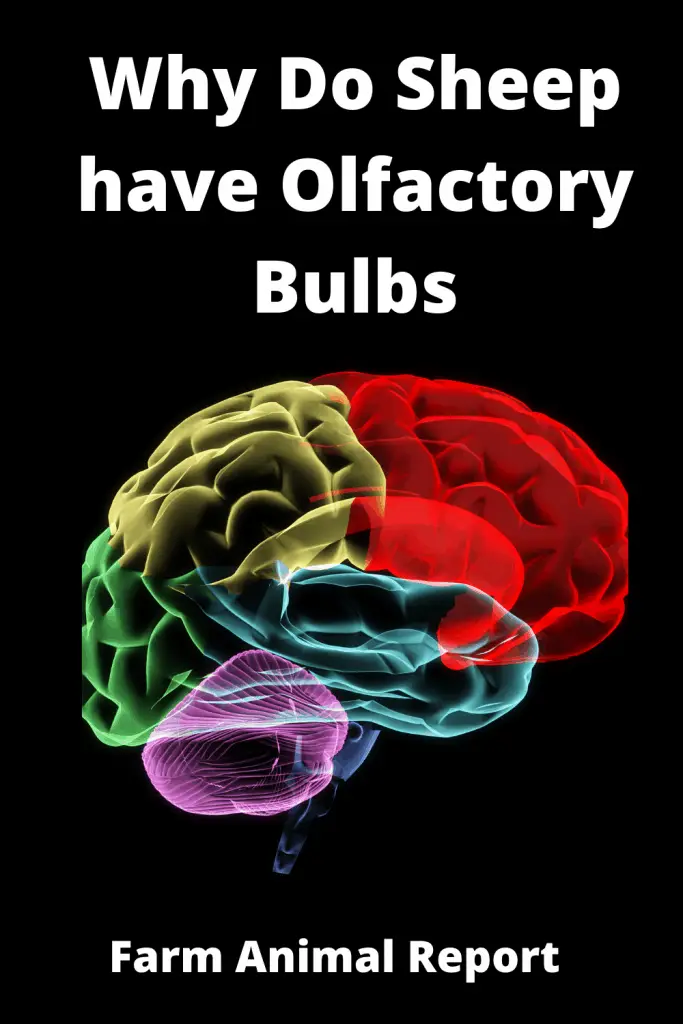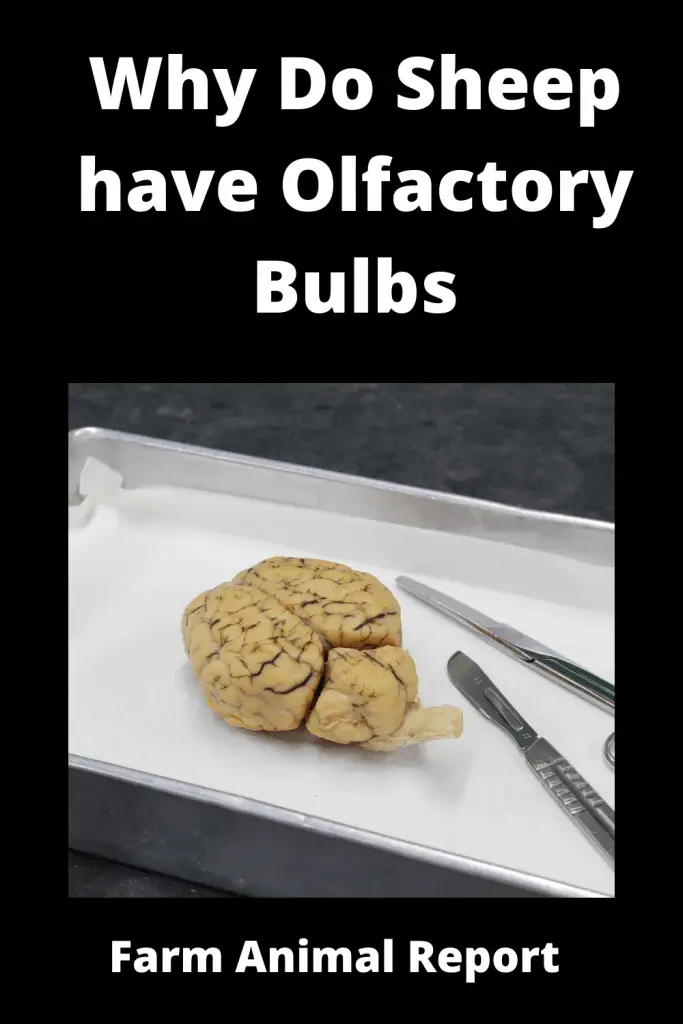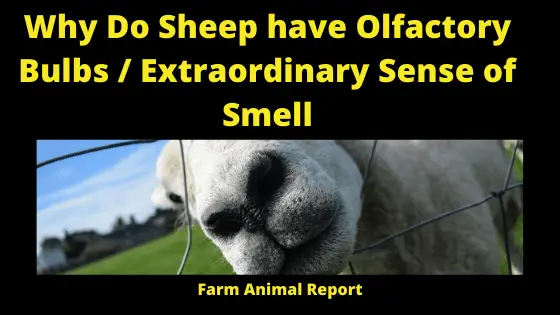As a general rule sheep olfactory bulb is divided into two sections. Do Sheep have Olfactory Bulbs. The olfactory bulb is a neural structure of the vertebrate forebrain involved in olfaction, the sense of smell. It sends olfactory information to be further processed in the amygdala, the orbitofrontal cortex (OFC), and the hippocampus where it plays a role in emotion, memory, and learning.
Why are the Olfactory Bulbs Larger in Sheep?
Do Sheep have Olfactory Bulbs. The olfactory bulb is a neural structure of the vertebrate forebrain involved in olfaction, the sense of smell. It sends olfactory information to be further processed in the amygdala, the orbitofrontal cortex (OFC), and the hippocampus where it plays a role in emotion, memory, and learning.
Check Out Amazon Educational Resources for Raising Sheep
The bulb is divided into two distinct structures: the main olfactory bulb and the accessory olfactory bulb. The main olfactory bulb connects to the amygdala via the piriform cortex of the primary olfactory cortex and directly projects from the main olfactory bulb to specific amygdala areas. Why are the Olfactory Bulbs Larger in Sheep?

The accessory olfactory bulb resides on the dorsal-posterior region of the main olfactory bulb and forms a parallel pathway. Destruction of the olfactory bulb results in ipsilateral anosmia while irritative lesion of the uncus can result in olfactory and gustatory hallucinations.
In sheep, the brain’s olfactory bulb is two or three times the size of the human olfactory bulb. It provides the sheep with a strong sense of smell which is key for survival.
The Olfactory Bulbs help A mother can use her sense of smell to find her baby in a flock. A baby can smell its way back to its mother if it gets lost. The leader of the herd can sniff out a predator like a wolf and that sense of smell will allow it to warn the other sheep. Some sheep, like bighorn sheep, even have strong horns and thick skulls that help protect their heads and soft brains.
- Finding Food
- Scent for Mating
- Maternal for Mom and Lamb
- Protection from Predators
- Identifying Flock Mates
Some scientists are studying them to learn about concussions. While a lot of mammals have similar things going on in their brains, each brain is a little different, and sometimes it’s those differences that can help an animal survive, whether they are out on the farm or out in the wild.
Functions of Olfactory Bulb
This part of the brain receives sensations of smell. As a neural circuit, the olfactory bulb has one source of sensory input (axons from olfactory receptor neurons of the olfactory epithelium), and one output (mitral cell axons).
- discriminating among odors
- enhancing the sensitivity of odor detection
- filtering out many background odors to enhance the transmission of a few select odors
- permitting higher brain areas involved in arousal and attention to modify the detection or the discrimination of odors.
Dogs / Pigs / Mice / Cats / Bees /
While all of these functions could theoretically arise from the olfactory bulb’s circuit layout, it is unclear which, if any, of these functions are performed exclusively by the olfactory bulb.
By analogy to similar parts of the brain such as the retina, many researchers have focused on how the olfactory bulb filters incoming information from receptor neurons in space, or how it filters incoming information in time.
At the core of these proposed filters are the two classes of interneurons; the periglomerular cells, and the granule cells. Processing occurs at each level of the main olfactory bulb, beginning with the spatial maps that categorize odors in the glomeruli layer.

These patterns may be related to sniffing or change in intensity and concentration of odorant. Temporal patterns may have an effect in the later processing of spatial awareness of odorant.
See Our Extensive Guide – 16 Ways to Make Money Sheep Farming
For example, synchronized mitral cell spike trains appear to help to discriminate similar odors better than when those spike trains are not synchronized. Destruction to the olfactory bulb results in ipsilateral anosmia while irritative lesion of the uncus can result in olfactory and gustatory hallucinations.
Sense of Smell / Olfaction in Sheep
Like most mammal’s sheep have an impressive representation of odor detection hardware in their noses and brain. As with all sensory systems the range and acuity of the olfactory sense can easily be ascertained from the number and types of receptors present in the olfactory epithelium in the nose.
While fully detailed studies have not been carried out in sheep,
the large size of the epithelium and extensive projections into the brain probably put this species on a par with most mammals like rodents, cats, and dogs.
In these species around 1000 different types of receptors in the epithelium can in combination allow discrimination between literally hundreds of thousands of different airborne odors. So, on the face of it, one might be forgiven for thinking that the sense of smell is all they really need.
There has also been a large amount of work investigating olfactory recognition of both objects and individuals by sheep. Sheep can, for example, during operant choice tasks (where they have to press panels with their nose or feet to indicate which of two smells they have learned is associated with a food reward), distinguish readily between odors from samples of wool, feces, saliva and secretions from the interdigital pouch, the inguinal pouch and the infraorbital pouch collected from different individuals.
In other contexts, rams are able to distinguish between estrous and non-estrous ewes using olfaction and the smell of a ram or their wool can induce estrus in ewes. Similarly, ewes are actually attracted to the odors of rams when they are sexually receptive during estrus.
The area that smelled plays arguably its most important role in sheep is where postpartum ewes learn to recognize their lambs by their individual odor characteristics within 1–2 h of giving birth. The behavioral aspects of this recognition are considered in more detail in chapter 3. We have also made detailed studies of the way the sheep brain processes lamb odors to allow this remarkably effective recognition memory to occur so fast and with such accuracy.
Difference between Sheep and Human Brain
Sheep brains are readily available from scientific vendors as dissection specimens, making them a popular choice in neuroanatomy classes, where the ultimate goal is to learn about the human brain. This is possible because the sheep’s brain and the human brain are very similar. However, there are some key differences that should be kept in mind during dissection.
Different Shape and Size
The sheep brain and human brain are very similar in overall structure, as are all mammalian brains. Each contains a cerebrum, cerebellum, and brain stem. The sheep brain is smaller, weighing around 140 grams, or about one-tenth of the weight of an adult human brain, though it is still large enough to be easily dissected.
The cerebrum is more elongated in sheep than in humans, and the cerebellum and brain stem are located behind the cerebrum, instead of being tucked below it. This is because sheep, being four-legged animals, have a horizontal spine, while humans stand upright with their spines vertical.
Sheep Frontal Lobe
A major difference is that the frontal lobe in the sheep brain is much smaller relative to the overall brain size, accounting for only a few percent by volume compared to about 25 percent in the human case. The frontal lobe is connected with higher cognitive functions, such as abstract thinking and analysis.
The relative size of the frontal lobe, as well as the number of ridges in the cortex, are indicators of species intelligence. Though the sheep has generally been regarded as an unintelligent animal, it is increasingly recognized that sheep are able to perform some advanced tasks, such as remembering the faces of other sheep and humans for two years or longer.
Sheep Olfactory Bulb
The sheep, like many mammals, have a more developed sense of smell, or olfaction, than humans do. The olfactory bulb is the part of the brain located underneath the frontal lobe that is responsible for relaying sensory information from the nose to the rest of the brain.
The olfactory bulb in sheep is two to three times the size of the human olfactory bulb, despite the sheep’s brain being much smaller overall. This reflects the importance of the sense of smell to the sheep.
In addition to helping it understand its surroundings and avoid danger, a sense of smell also plays a crucial role in establishing the bond between mother and infant, known as imprinting.
Sheep Optic Chiasm
The optic chiasm is a cross-shaped structure centrally located on the underside of the brain where the optic nerve fibers from each eye partially cross over to the corresponding optical tract on the other side of the brain.
It is more pronounced in the sheep brain because sheep, like many prey animals, have eyes toward the sides of the head that operate more independently, giving the sheep a much wider field of vision. Therefore, most of the visual information from each eye cross over.
Humans have more frontal eyes and share information from each eye more evenly between the brain hemispheres to enable complex visual processing tasks, such as depth perception.
Sheep Associations 10 Breeds of Sheep
| Breeds of Sheep | Country Origin | Purpose of Breed | Use | Ewe Weight | Association For Info |
|---|---|---|---|---|---|
| Suffolk Sheep | Britian / Suffolk | Fast Growing | Meat | 250 - 350 Lbs | United Suffolk Sheep Association |
| Merino Sheep | Spain | Softest Wool | Wool | 100 - 200 Lbs | American and Delane Merino Sheep Association |
| Hampshire | Britain | Best Tasting Mutton | Wool / Meat | 200 Lbs | American Hampshire Sheep Association |
| Romney | England / Romney Marsh | Disease Resistance | Wool / Meat | 225 - 275 Lbs | American Romney Breeders Association |
| Lincoln Sheep | England | Produce Longest Fleece In World | Wool | 250 - 350 Lbs | National Lincoln Sheep Breeders Association |
| Dorper Sheep | South African | Fast Growing Meat | Meat | 230 Lbs | American Droper Sheep association |
| Turcana Sheep | Romainia | Adapted Alpine Pasture | Wool / Milk / Meat | 175 - 200 Lbs | ? |
| Rambouilette Sheep | France | Strong / Hearty / All Climates | Wool / Meat | 300 Lbs | American Rambouilette Sheep Breeders Association |
| Leicester Longwool | United Kingdom | Fast growing / Good Fleece | Wool | 200 Lbs | Leicester Longwool Sheep Breeders Association |


